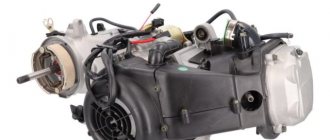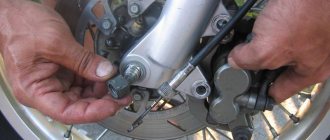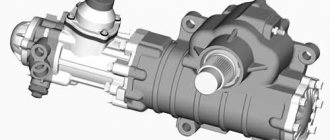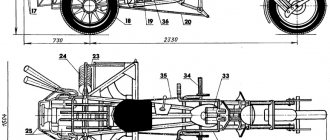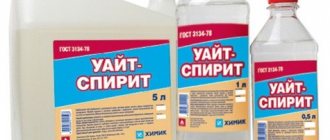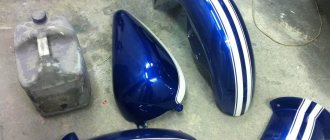What to consider when choosing oil for a pit bike
To choose the right liquid, several factors should be taken into account.
Engine type
Traditionally, such equipment uses 4-stroke engines with a volume of 50 to 165 cc/cm. but there are also two-stroke models. Depending on the type of power plant, the type of lubricant should be selected.
Manufacturer's recommendations
The most accurate factor is the manufacturer's tolerance. The motorcycle passport usually contains complete information about the viscosity, type and tolerances of the lubricant.
Season
Usually a pit bike is used in the summer. But there are some thrill-seekers who ride all year round. This is where nuances arise.
- In summer, when the temperature outside rises above +30 degrees Celsius, the standard viscosity (10W-40), recommended by most factories, is not relevant. The liquid begins to simply boil away from overheating. Here you should select lubricants with increased high-temperature viscosity.
- In the spring-autumn period, at air temperatures from +10 to +25, the most common viscosity for pita 10B-40 is useful. The motor will operate in nominal mode and without overheating.
- With the arrival of cold weather, you should definitely switch to less thick lubricants. In light frosts, you can use formulas like 5W-30, most common for scooters and mopeds. If the driver is completely extreme and drives in frosts worse than -10, it would not be a bad idea to use special oils for snowmobiles with a density of 0W
Tolerances and specifications
Typically, manufacturers recommend pouring oils from the API SJ group and similar ones into pit bikes. This is due to the simple design of the power plant and the absence of sophisticated exhaust cleaning systems.
There are also recommendations for lubricant base. In most cases, it is semi-synthetic, but mineral water should be poured into damaged engines due to its higher viscosity.
Petrol
It is always best to look at what brand the manufacturer recommends using and fill it with that brand. But most likely, if you do not operate the bike under extreme loads and do not participate in races, you should not bother with the choice: both brands are suitable for most models (both 92 and 95), and you can fill the tank with AI-92.
But there are other tips on the forums. The first, common one is that pit bikes are filled with 92nd gasoline if the engine capacity is less than 140 cubic meters, and 95th if the engine capacity is larger. And the second one concerns compression in the engine. You can find it out either from the technical documentation for your model, or measure it with a compression meter. If the indicator is above 10, then you should refuel with AI-95, if less, then 92 will do.
Pit bikes with oil filter
The seat and the oil filter itself are in the photo.
The steps for changing the oil are similar, only a couple of points are added.
- Before unscrewing the drain plug, remove the oil filter.
- After draining the oil, insert a new oil filter. Follow the sequence, different models can be arranged with a spring. We recommend that you treat the oil filter cover mounting bolts with a special liquid that will prevent them from being unscrewed.
Where did Motul come from?
So why are Motul oils so popular? Perhaps because of high consumer qualities, or is it just well-promoted marketing stuck in the minds of ordinary people? To answer this question, let’s go back a few years and remember the history of Motul’s formation in the Russian market.
Those who are older should remember that Motul appeared suddenly, boldly and very aggressively, advertising flashed at all auto and motorcycle competitions. This memorable bright red sticker with white lettering was everywhere, on the banners of racing events, on every racing car or motorcycle. Gradually, an opinion began to form that there was simply no alternative to oil for sports. And as you know, what is used in sports sooner or later flows to ordinary consumers. Everyone wants to use the best, what the champions use will definitely not let you down. But no one tells consumers how often athletes change their oil, and red stickers do not mean that this is the oil in the engine, sponsorship, a slippery business.
Thus, year after year, Motul conquered the Russian market and now every schoolchild knows that motor oil 5100 has a regular golden color, 7100 is red, and 300v is poisonous yellow-green. And if previously the price of Motul was quite affordable, now, thanks to the fact that they buy well, prices are kept at such a level that you can buy any other oil much cheaper.
Viscosity and classification of motor oil
We use the American SAE designation system, which is most commonly used throughout the world. Nowadays, products are not divided by season, they are usually called non-seasonal, so it must remain sufficiently liquid during cold starts, and also not spread too much (be viscous) at high temperatures. In order to understand exactly what composition is in front of us according to these indicators, we use markings with the letter W and numbers. Those values that appear before the letter indicate the minimum possible temperature, and after - the maximum permissible. Example: 5W40, 10W30, 10W40 are not very viscous compounds that are well suited for those who like to ride in extreme conditions when the snow has not melted from the asphalt everywhere. This is a great option for pit bikes. But for heavy bikes and sportbikes, the more optimal ones are 10W50, 10W60, 15W50, 20W50 with increased viscosity.
What oil is best to put in a pit bike?
Today, the pit bike has become almost the most popular vehicle among motorcycle equipment. They sell like hot cakes on the market. But there is no such equipment that you can just buy and ride all your life.
Pit bikes need timely maintenance, such as changing the engine oil. This procedure is very important, since the four-stroke engines produced today are more advanced and powerful than earlier models. Excess or lack of oil negatively affects the operation of the pit bike, so you must know the exact volume for the engine of a particular model. As a rule, this is 800-900 ml.
In order to change the engine oil, the first step is to unscrew and remove the dipstick, which also acts as a filler plug. This is necessary so that some air gets inside, which will make it easier for the oil to exit through the drain hole.
After this, you need to slightly unscrew the drain bolt, which is located at the bottom of the crankcase. This can be done with an open-end wrench size 17. The drain bolt is visible through the hole in the crankcase protection.
Before completely removing the drain plug, it is better to place a 1-liter container under the engine. You can take a 5-liter water bottle with the neck cut off or a canister. The main thing is capacity.
Only after this can you unscrew the plug completely. During this time, try not to splash yourself with oil or drop any part such as a nut or bolt into it.
In this position, the pit bike should be left for half an hour so that all the used oil flows into the container without any residue. You can slightly rock the pit bike in different directions so that there is no oil left anywhere. By tilting the motorcycle to the sides several times, you can make sure that a lot of old oil remains on the walls. When the oil has been completely drained, the drain bolt can be replaced and tightened.
Which oil to choose is up to everyone to decide for themselves. For example, for highly accelerated engines it is best to use synthetic oil; for engines with high mileage, mineral oil is excellent because it provides a thick film layer and restores compression.
In general, the best option for pit bikes is semi-synthetic oil with a viscosity of 10W40. You should ask the manufacturer exactly how much to pour so as not to disrupt the operation of the engine. After the required amount of oil has been poured in, you need to insert the dipstick and plug into place without tightening it yet. You need to make sure that the motorcycle is level, without distortions, then remove the plug and dipstick. The correct oil level is in the middle of the ribbed surface. After this, you can tighten the plug with the dipstick completely and go for a ride. It must be said that after turning on the pit bike, the oil level will drop slightly, but this is normal, since it is evenly distributed throughout the crankcase.
And you definitely need to change the oil in a timely manner, forgetting that how long your pit bike will serve you largely depends on it.
Rating of motorcycle oils by best brands
Brand awareness is not the most important indicator of quality. Below we will present a list of specific models and give a few words about them. We recommend basing your choice on the individual characteristics of the motorcycle. If you don’t know what composition is best to put in your bike, you can seek advice from the online store tvoymoto.ru; they offer a wide range of products and employ competent specialists.
LUKOIL MOTO 2T
Russian production. Very favorable price (from 139 rubles). Suitable for 2-stroke vehicles, mixed with gasoline in a ratio of 1:50. There are practically no fakes.
MANNOL 4TAKT PLUS 10W40
German brand. The composition is intended not only for motorcycles, but also for any four-stroke internal combustion engines. Semi-synthetics perfectly protect cylinders and pistons, as well as the transmission. Cost – from 350 rub.
Motul 300V Factory Line Road Racing 10W40
High-quality synthetics that protect even under extremely high loads. Suitable for sports bikes in racing conditions. The only downside can be the price - 1320 rubles per liter. The highest place in the ranking is 5 points.
REPSOL MOTO RACING 4T 10W40
The brand is completely specialized in motorcycles and takes into account all the operating features. It is 100% synthetic. Another advantage is good cleaning characteristics. Price – 1100 for 1l. The downside is that it is not available in all stores.
LIQUI MOLY Motorbike 4T 15W-50 Street 4 l
Let us note the versatility of the German expensive product (more than 2,000) - it is suitable for motorcycles, ATVs, and even motor boats.
MOTUL 7100 4T 10W-50
One of the special merits of fuels and lubricants is a very effective reduction of friction, due to which the heating of parts occurs much less, and their service life increases. Unfortunately, it can be difficult to find a product even in Russian online stores.
Eni/Agip i-Ride Scooter 2T
Italian version for two-stroke engines. Plus – low sulfur content. This leads to the fact that mixing with gasoline occurs quickly and homogeneously, and during use there is practically no formation of soot.
IDEMITSU 4T Max Eco 10W-30
This is a mineral product from Japan with very high efficiency. The low oil consumption is especially noticeable over long distances. Users also note a decrease in vibrations and noise.
ZIC M9 4T 10W-40
South Korean lubricant suitable for high loads. Additionally, it protects against oxidative processes and friction.
ELF HTX 3818 SAE 5W-30
Very versatile, but most suited to race track bikes. Viscosity is maintained so well at high speeds and, accordingly, friction. The price for it is really high - from 1000 per liter. If you find it cheaper, most likely it’s a fake; there are a lot of them.
ELF MOTO 4 ROAD 10W-40
Due to the effect on the pressure inside the engine, the dynamics improve. Most people note that road and motocross bikes start to go faster. At the same time, the wear resistance of spare parts also increases.
MOBIL 1 Racing 4T 15W-50
High-quality synthetics with additives for equipment with increased power. Finnish lubricant is considered one of the best in terms of engine starting in cold weather conditions.
CASTROL Power 1 Racing 4T 10W-40
Semi-synthetics, which move very quickly along the highways, guaranteeing a high speed of acceleration. Friction and oxidation do not interfere. There is a drawback - cold starting is problematic, it should be used in the summer.
KAWASAKI Performance Oils 4-Stroke Engine Oil Semi Synthetic SAE 10W-40
Produced by a famous motorcycle brand, the product is of course recommended for the entire Kawasaki four-stroke line. It is positioned as resistant to wear, prevents rust and is very gentle on rubber seals.
Eurol Motorcycle 10W-40
Good protection at sub-zero temperatures - the oil film remains in a strong layer throughout use. But the Netherlands hasn't made enough provisions for friction-reducing additives.
Single-barreled gun requires good oil
Single-cylinder engines of enduro and even more so cross-country motorcycles are demanding on the quality of oils. One of the most important parameters that should be monitored when operating a motorcycle is the oil temperature, but alas, as a rule, there are no oil temperature sensors on motorcycles.
Air-cooled engines are more susceptible to oil overheating, which is why Honda XR engines begin to smoke. Overheated oil loses its properties, cokes the oil scraper rings and oil waste appears, and the lack of proper lubrication finally kills the engine, the owner ends up with major repairs and a lot of money. Off-road driving also has a negative impact when speeds are low and dirt covers the engine and it stops cooling properly.
Water-cooled engines handle oil temperature much better, but be careful because coolant temperature is not the same as oil temperature! The difference can reach several degrees, which can be critical for lubricating properties.
